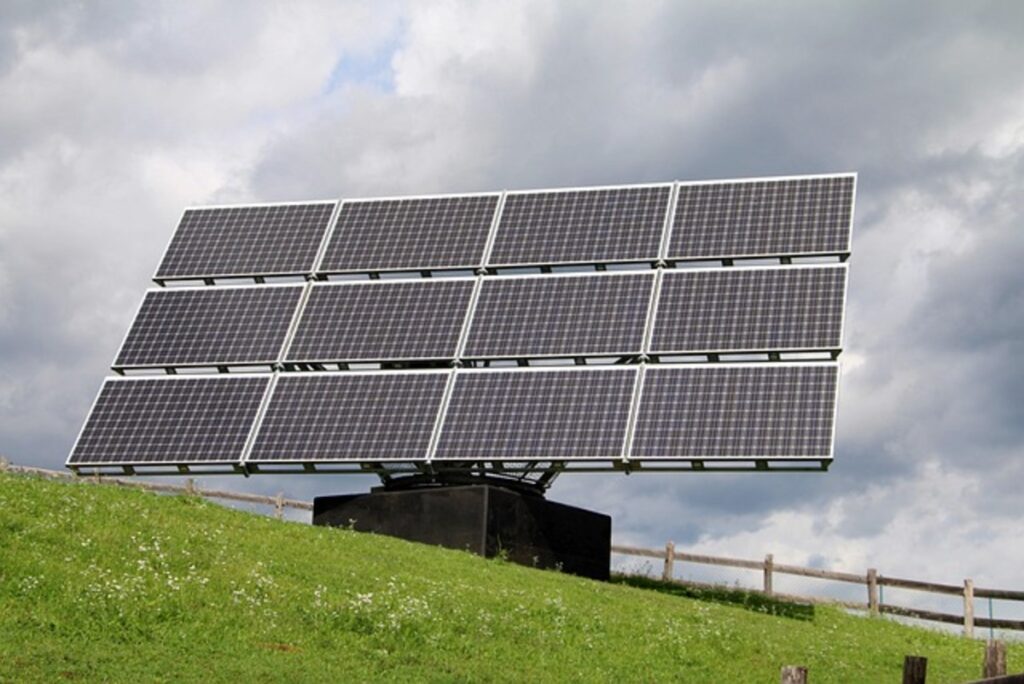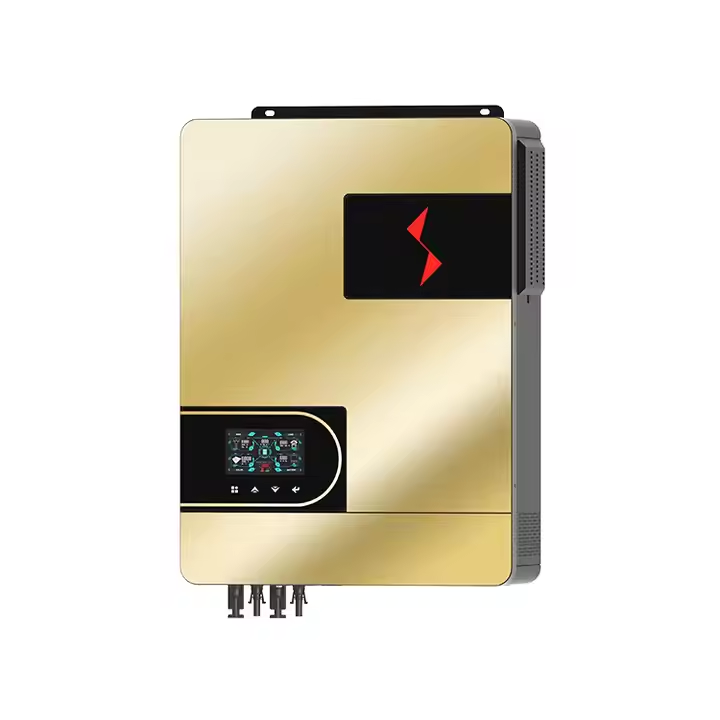I. Introduction
In today’s rapidly evolving energy landscape, future-proofing your home with a resilient, adaptable energy system is more important than ever. Homeowners now demand solutions that reduce dependence on traditional utilities, lower energy bills, and minimize environmental impact. Hybrid solar inverters have emerged as a cornerstone of modern residential solar setups, offering a powerful combination of solar energy conversion and battery management. This article will explore the fundamental concepts of hybrid solar inverters, discuss their benefits, and provide practical guidelines on how to select, install, and maintain a system that meets your long-term energy needs.
II. Understanding Home Energy Solutions
Before diving into hybrid technology, it is crucial to understand the broader context of home energy solutions. Traditional grid-tied systems, though prevalent, are limited by outages and rising energy costs. Off-grid systems offer independence but can be challenging to design without proper energy management. Solar energy, as a renewable resource, provides a cleaner alternative with significant economic and environmental advantages. The emergence of hybrid solar systems—integrating solar panels with energy storage and smart inverters—provides homeowners with an innovative solution that marries energy independence with efficiency and reliability.
III. What Is a Hybrid Solar Inverter?
A. Definition and Core Functionality
A hybrid solar inverter is an advanced device that not only converts the DC electricity produced by solar panels into AC electricity for household use but also integrates battery storage management. Unlike traditional inverters, which function solely in a grid-tied or off-grid environment, hybrid inverters combine the best of both worlds. They manage energy flow dynamically, support backup power during outages, and even allow excess energy to be fed back into the grid.
B. Key Components and Features
Hybrid inverters typically feature:
High Conversion Efficiency: Utilizing state-of-the-art circuitry to maximize the conversion of DC to AC power.
Battery Management: Intelligent systems that monitor and optimize battery charge and discharge cycles.
Smart Connectivity: Built-in displays, Wi-Fi, or Bluetooth interfaces that enable real-time monitoring, remote management, and data logging.
Safety Mechanisms: Overcharge, over-discharge, and short-circuit protection to ensure safe long-term operation.
C. Comparison with Traditional Inverters
Traditional inverters are generally designed for single-mode operation—either grid-tied or off-grid. In contrast, hybrid inverters offer the flexibility to switch between modes based on energy availability and load demands. This versatility is especially important for homeowners aiming for future-proof, resilient energy systems that can adapt to changing usage patterns and technological advancements.
IV. The Role of Hybrid Solar Inverters in Future-Proofing Home Energy
A. Enhanced Energy Efficiency
Hybrid inverters optimize energy flow by maximizing solar panel output and efficiently managing battery storage. Technologies like MPPT (Maximum Power Point Tracking) ensure that even under fluctuating sunlight conditions, the system extracts the maximum energy available. This results in improved overall energy efficiency and a higher yield from your solar investment.
B. Flexibility and Versatility
By combining grid-tied and off-grid functionalities, hybrid inverters provide unparalleled flexibility. They allow your system to seamlessly switch between using solar energy, battery storage, and grid power. This ensures your home stays powered during outages while taking full advantage of solar generation when conditions are optimal.
C. Scalability and Future Expansion
A key advantage of hybrid inverters is their modular design, which supports system expansion. As your energy needs grow or new solar technologies emerge, you can upgrade your system without a complete overhaul. This future-proofing capability ensures that your home energy system remains efficient and cost-effective over the long term.
D. Increased Reliability and Safety
Integrated safety features in hybrid inverters reduce the risks associated with overcharging, deep discharging, and electrical faults. Real-time monitoring provides critical insights that help maintain system health, thereby enhancing both reliability and safety.
E. Economic and Environmental Benefits
The economic advantages are significant: reduced utility bills, long-term return on investment through energy savings, and improved property value. Environmentally, maximizing solar energy use helps lower your household’s carbon footprint and supports a greener, more sustainable future.
V. Key Considerations When Choosing a Hybrid Solar Inverter
A. System Compatibility and Specifications
Voltage and Current Matching: Verify that your solar panels, battery storage, and hybrid inverter have compatible voltage and current ratings.
Capacity Determination: Calculate your household energy consumption and choose an inverter that can handle your current needs while allowing for future expansion.
B. Efficiency Ratings and Performance Metrics
Conversion Efficiency: Look for inverters with high conversion efficiency ratings to ensure minimal energy loss during DC to AC conversion.
Environmental Impact: Consider how local conditions—such as temperature and shading—affect inverter performance.
C. Features and Functionalities
Integrated Monitoring: Ensure that the inverter offers real-time monitoring and data logging to track energy performance.
Safety Features: Check for comprehensive protective measures including overcharge, over-discharge, and short-circuit protection.
Smart Connectivity: Devices with Wi-Fi or Bluetooth capabilities simplify remote management and troubleshooting.
D. Environmental Suitability and Durability
Operating Temperature Range: Choose an inverter that can reliably operate under local climatic conditions.
Ingress Protection: High IP ratings are crucial for outdoor installations to protect against dust and moisture.
E. Brand Reputation and Support
Warranty and Service: Prioritize reputable brands offering robust warranties and quality customer support.
User Feedback and Certifications: Research product reviews and industry certifications to confirm reliability and performance.
VI. Best Practices for Installation and Maintenance
A. Pre-Installation Planning
Site Survey and Energy Assessment: Conduct a thorough site evaluation to determine the optimal location and system size.
Regulatory Compliance: Ensure you obtain all necessary permits and adhere to local guidelines for solar installations.
B. Installation Steps
Mounting of Solar Panels: Position panels for maximum sun exposure, considering optimal tilt and orientation.
Secure Wiring and Connections: Carefully connect solar panels, the hybrid inverter, battery storage, and other components ensuring proper polarity.
System Integration: Integrate the charge controller with the hybrid inverter seamlessly, confirming that battery storage is properly configured.
Testing and Commissioning: Perform rigorous system tests to ensure all components are functioning optimally and adjust configurations as needed.
C. Regular Maintenance and Troubleshooting
Routine Inspections: Regularly clean solar panels, check wiring, and monitor battery performance.
Data Monitoring: Use integrated monitoring tools to detect anomalies early.
Preventative Maintenance: Follow a scheduled maintenance plan to replace aging components and adjust settings to maintain peak efficiency.
VII. Case Studies and Real-World Examples
Example 1: Residential Application
In one residential installation situated in a high-temperature region, the integration of an MPPT solar charge controller with a hybrid inverter increased daily energy harvest by 20%. The system consistently delivered a stable AC output, even under variable sunlight conditions, thereby extending the battery’s lifespan and enhancing overall energy reliability.
Example 2: Community Solar Project
A community solar project in a semi-arid area optimized its Low Voltage Disconnect settings on the controller to prevent deep battery discharge during extended cloudy periods. The hybrid inverter’s ability to seamlessly switch between solar input and battery discharge ensured uninterrupted power supply during peak usage, supporting critical community services.
Lessons Learned
Real-world examples emphasize the importance of precise component matching, proactive monitoring, and regular maintenance. Avoiding common pitfalls such as undersized wiring or misconfigured settings can greatly enhance system performance and reliability.
VIII. Conclusion
Hybrid solar inverters are pivotal in future-proofing your home energy system. They offer enhanced energy efficiency, flexibility, scalability, and safety while delivering significant economic and environmental benefits. By carefully assessing your needs, choosing components that match your system’s specifications, and following best practices during installation and maintenance, you can ensure a reliable, long-term, and cost-effective solar power solution for your home.
For homeowners seeking sustainable, future-ready energy solutions, investing in a hybrid solar inverter integrated with advanced solar control technology represents a smart, forward-thinking strategy.
IX. Frequently Asked Questions (FAQs)
What distinguishes hybrid solar inverters from traditional inverters?
Hybrid inverters combine solar power conversion with battery management, allowing for both grid-tied and off-grid operation, whereas traditional inverters typically support only one mode.How do I determine the right size for my hybrid inverter system?
Evaluate your current energy consumption, solar panel output, and battery storage capacity. Ensure that the inverter’s voltage and current ratings meet or exceed these specifications.What are the key maintenance practices for ensuring system longevity?
Regularly inspect all wiring, clean your solar panels, monitor battery voltages, and recalibrate programmable settings, such as Low Voltage Disconnect, to maintain optimal performance.How does smart connectivity benefit my home energy system?
Smart connectivity enables real-time data monitoring, remote control, and data logging, making it easier to troubleshoot issues and optimize overall system performance.



